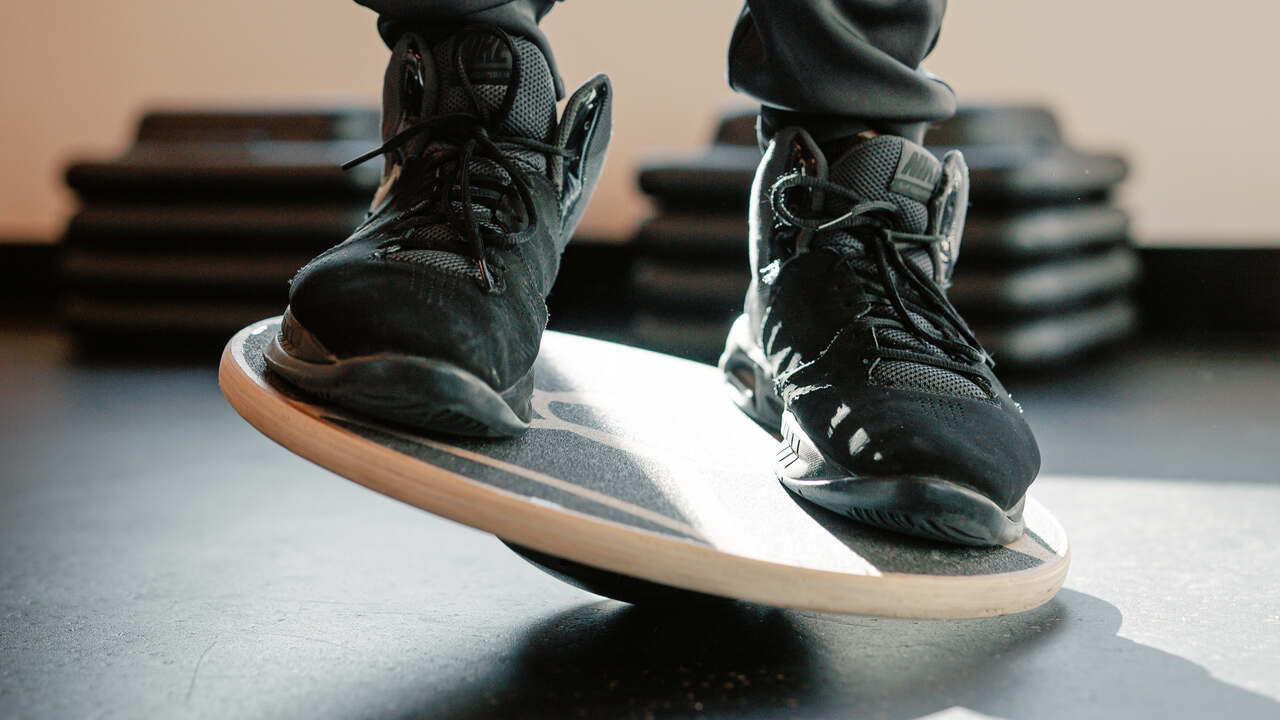
Physiotherapy for an ankle sprain is not just recommended; it’s crucial for optimal recovery. Beginning physiotherapy soon after the injury, ideally within the first two days, can significantly improve the outcome. The best way to rehab a sprained ankle involves a combination of rest, ice, compression, and elevation (RICE) initially, followed by targeted exercises to restore mobility and strength.
Effective exercises for a sprained ankle include the following:
1. Towel Stretch
Essential for increasing the range of motion. Sit with your injured foot stretched out in front of you, loop a towel around your foot (keeping the heel on the ground), and gently pull towards you to stretch the calf and heel.
2. Alphabet Exercise
This helps improve mobility and control. Sit with your foot flat on the floor and write the alphabet in the air with your big toe, moving only your ankle. This helps work the muscles and tendons in various directions, including inward.
3. Heel and Calf Raises
Stand flat on the floor and slowly raise your heels, standing on your toes, then lower back down. This strengthens the muscles in your calf and the injured ankle.
The Duration of Physiotherapy for Sprained Ankles
Physiotherapy duration varies depending on the severity of the sprained ankle but generally lasts between a few weeks to several months. Throughout rehabilitation, it’s crucial to avoid any activities that trigger pain or further strain on the injured ankle or foot.
Always consult with a qualified physiotherapist before starting any rehabilitation exercises. They can provide a tailored rehab program based on the extent of your injury and ensure that your recovery process supports the healing of your ankle sprain effectively.
Unlock Your Path to Recovery with Expert Guidance
Don’t let an ankle sprain sideline your active lifestyle. At Affinity Wellness, we believe that a targeted physiotherapy program is essential for a swift and effective recovery. Our team of dedicated physiotherapists is here to guide you through each step of your rehabilitation journey, ensuring that you regain your strength, mobility, and confidence.
Whether you’re dealing with a fresh sprain or struggling with ongoing ankle issues, we offer personalized programs tailored to meet your unique needs. Embrace a holistic approach to recovery and benefit from our expertise in combining restorative exercises with proven physiotherapy techniques. Contact us today!
Frequently Asked Questions
When Should I Start Physiotherapy for an Ankle Sprain?
Starting physiotherapy soon after the injury, ideally within the first two days, can significantly improve recovery outcomes. Early intervention helps in reducing swelling, improving flexibility, and preventing chronic issues such as instability and recurring sprains. It’s also crucial to avoid the development of scar tissue in a way that could limit movement.
A physiotherapist will employ various techniques, including manual therapy, ice, compression, and elevation, to manage symptoms and facilitate healing. Starting physiotherapy early can be a pivotal step in a quicker and more effective recovery, allowing for a safer return to daily activities and sports.
What Are Effective Exercises for Rehabilitating a Sprained Ankle?
Effective exercises include the Towel Stretch for increasing range of motion, the Alphabet Exercise for mobility and control, and Heel and Calf Raises for muscle strength. All of these are discussed in detail above.
How Long Does Physiotherapy for a Sprained Ankle Typically Last?
The duration varies based on the sprain’s severity, usually ranging from a few weeks to several months. It’s crucial to follow your physiotherapist’s guidance closely and avoid activities that cause pain or strain on the recovering ankle. Incorporating a gradual increase in exercises and activities as recommended can help in avoiding setbacks. Regular assessment by a physiotherapist is important to adjust the rehabilitation plan as needed, ensuring the most effective recovery process.


